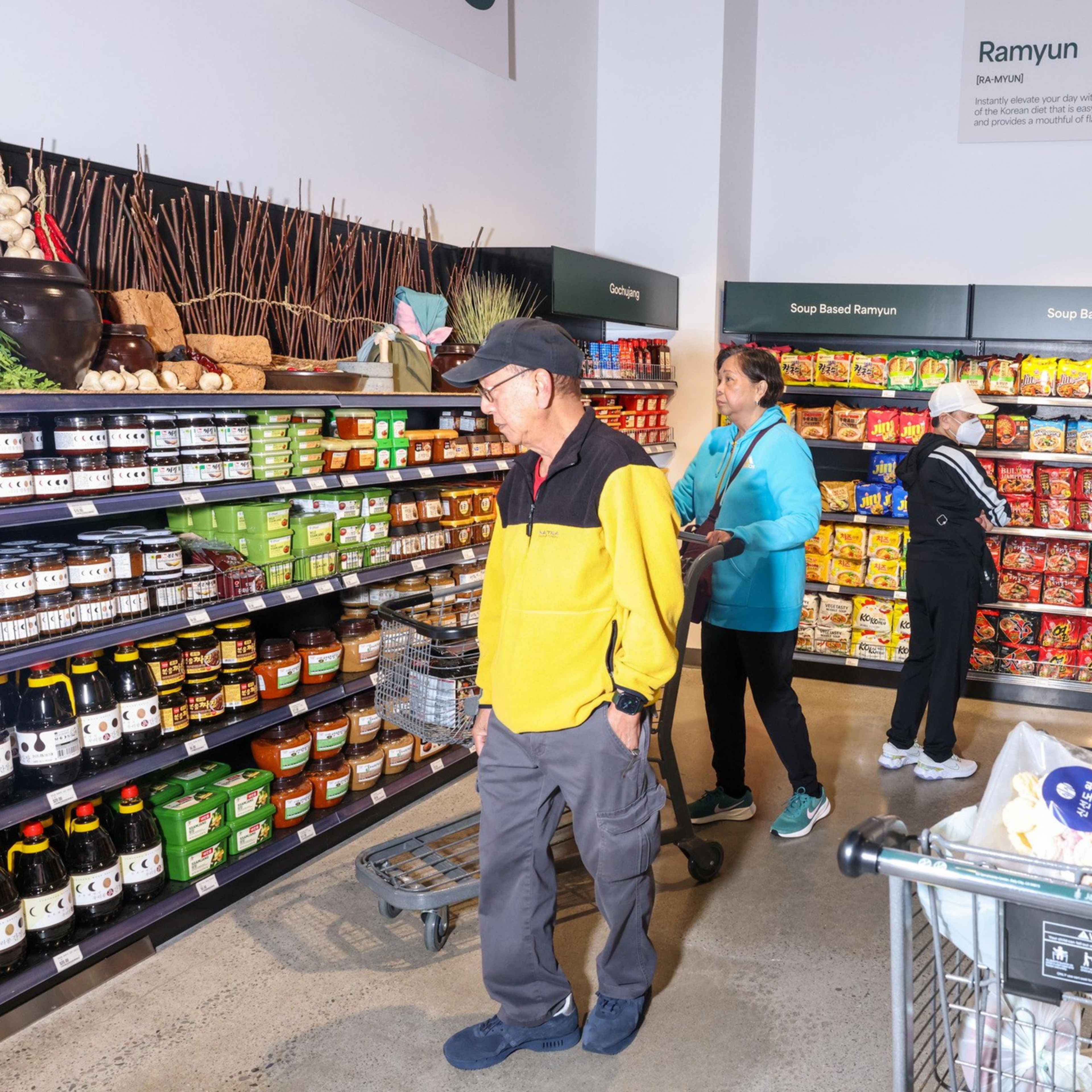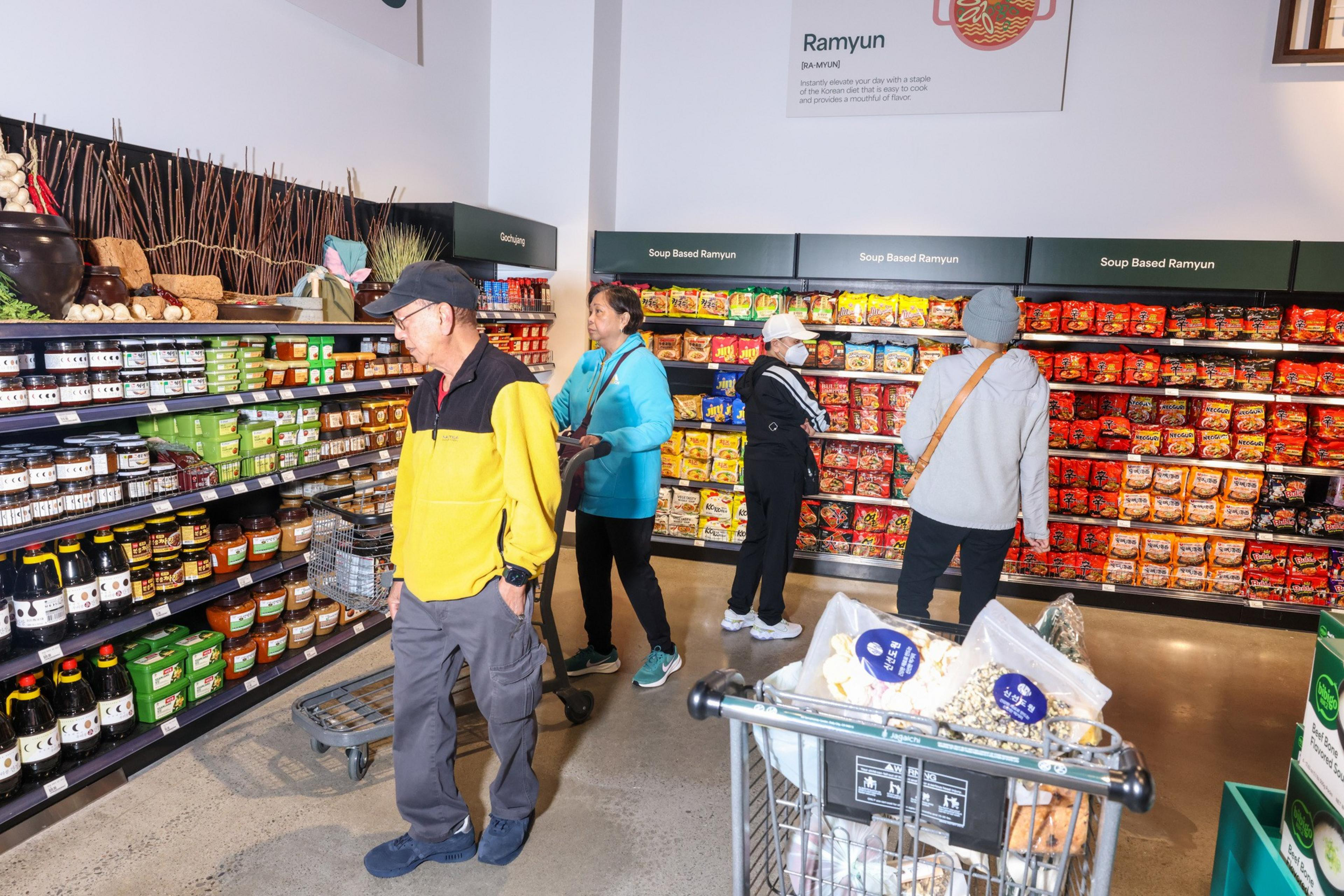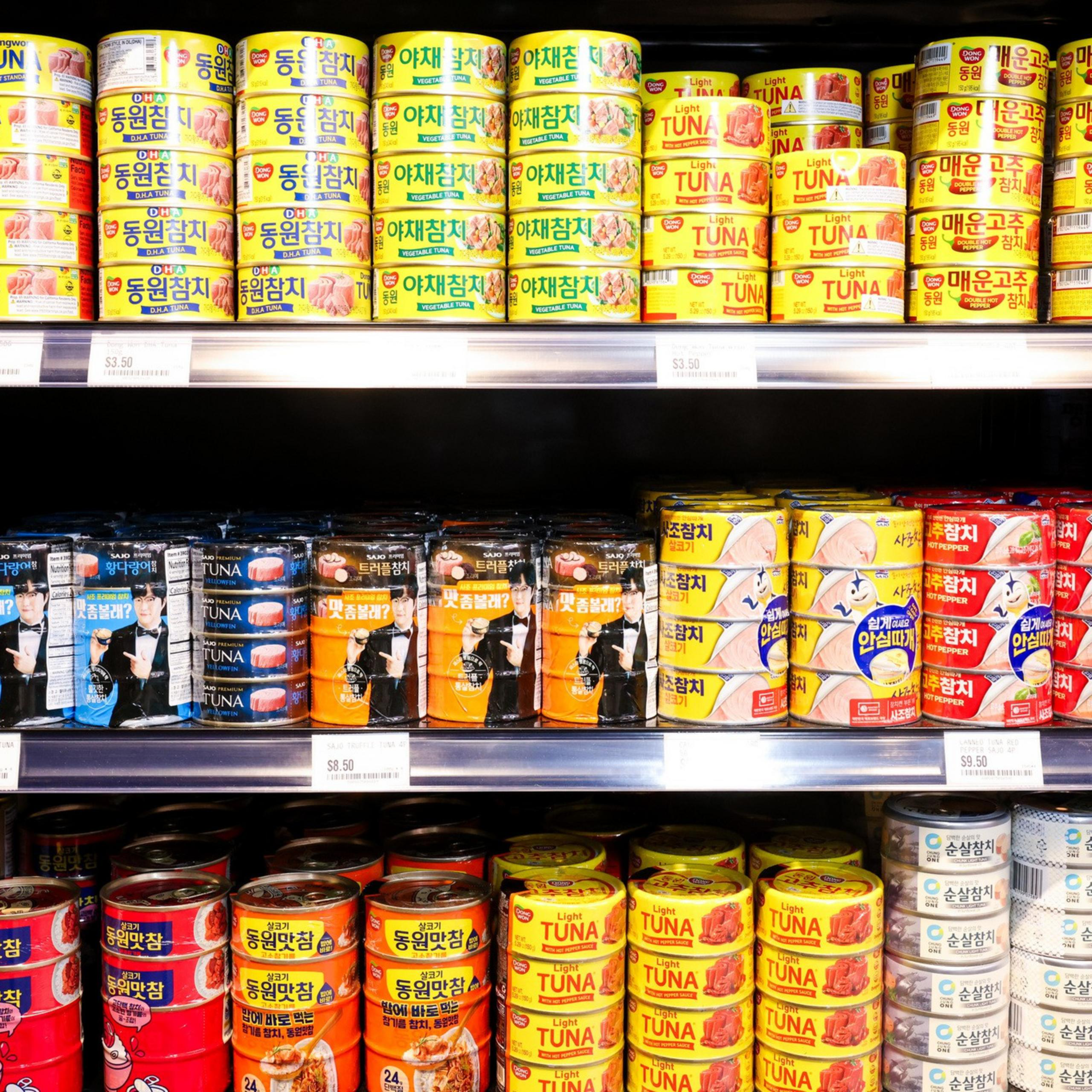Walking the aisles of Jagalchi Market in Busan, South Korea — the country’s largest fish market — is like navigating a maze.
Part seafood warehouse, part interactive aquarium, the market houses a menagerie of underwater life-forms: spiny, crawling crabs; fresh-caught abalone; and squirming “penis fish,” from which smirking employees squirt water to get shoppers’ attention. Vendors in elbow-length rubber gloves and aprons beckon with laminated menus and dizzying lists of options delivered in Korean or broken English. (Best price, they promise.) One floor up, restaurants wait to season, slice, and grill whatever fresh seafood you select.
Even with a conversational grasp of Korean, the experience is overwhelming and, at times, disorienting. But as a Korean American, I love the wonderful chaos and clockwork efficiency that feels so distinct to the country and culture.
Imagine my excitement, then, when a hotly anticipated grocery store named for the Busan market opened in March at Serramonte Center. Alongside hundreds, I queued for more than an hour to get inside on opening day. And, like everyone else, I walked in with my mouth agape.


I expected the kind of organized chaos inspired by Jagalchi in Korea. Instead, the 75,000-square-foot former JCPenney had a highly curated Eataly-meets-Erewhon aesthetic, with a comparatively diminutive selection of sashimi, prepackaged soy-sauce-marinated crab, and peeled shrimp.
Despite clear overhead signage (in English), I, a 36-year-old veteran Korean grocery shopper, felt lost. I couldn’t tell if it was the dim lighting, the outsize displays of instant ramen and soju, or the museum layout, with wide pathways built for browsing, but the glossy sheen felt foreign.
Where were the cramped aisles stocked floor-to-ceiling with 14 brands of sesame oil and packages of roasted seaweed in every shape and size? Why were there signs with elementary explanations of “banchan” and “tofu”? Who was this place for?
It felt like something had been lost in translation between Busan and Daly City. This Jagalchi wasn’t built for me; this Jagalchi was built for people who don’t know the difference between kimchi and kimbap.
This is by design. Ashley Jung, marketing manager for Jagalchi’s Korean-based parent company, Mega Mart, says the store wants to attract not only Korean Americans but those who might be wholly unfamiliar with Korean cuisine. “Jagalchi isn’t just for Korean people,” Jung confirms. “It was intended to be more accessible. We designed this place so you can take your time, explore, and enjoy the experience of shopping itself. It’s a modern take on a traditional Korean market.”
Nine-year-old me never could have imagined that people would wait for hours for any kind of Korean food. But in the last 30 years, Korean culture has become a global phenomenon (opens in new tab). Americans have become infatuated with Korean everything: K-pop groups top the Billboard charts (opens in new tab); “Squid Game” remains one of Netflix’s (opens in new tab)most-streamed shows (opens in new tab); U.S. grocery brands like Trader Joe’s, Safeway, and Costco stock kimchi and dried seaweed; and more Korean restaurants are garnering (opens in new tab)highly coveted awards (opens in new tab).
In one sense, Jagalchi’s mere existence in Daly City marks a milestone, a physical sign that the American craving for Korean culture has become so voracious that there’s a need for a place where non-Koreans can find the makgeolli (sparkling rice wine) they saw on TikTok or the mandu (dumplings) eaten by characters on their favorite K-drama.
“At least 40% of our customers seem like they’re non-Korean or non-Asian,” Jung says. “If we had opened Jagalchi 10 years ago, it wouldn’t have been this successful.”
But in an effort to make Korean food more accessible, Jagalchi may have made shopping less appealing to Koreans.
‘There’s always upside and downside’
On my second visit to Jagalchi, I watched Koreans of my parents’ generation wander carefully, looking, pointing, and nodding like they might at a zoo, not a supermarket. I left that trip with just a sheet mask and a single can of Sac Sac grape juice.
Kummi Kim, who owns the popular Korean restaurant Ilcha in the Marina, was excited about Jagalchi’s debut and visited not long after the opening in March. After waiting in a long line to enter, she was impressed by the store’s extensive selection of hard-to-find Korean alcoholic beverages. But the experience was so overwhelming that she didn’t stay long to explore. “I was like, oh, God, I need to get out of here,” Kim recalls. “I was just a little overwhelmed by the whole experience.”


One issue was the layout. For Kim, the tight aisles at H Mart feel familiar, even cozy. In contrast, Jagalchi’s open floor plan — designed to make the shopping experience more approachable for non-Korean shoppers — felt unmanageable.
Still, she acknowledges the store as a positive sign for the growth of Korean culture in the United States. “It’s great to see the expansion,” she says. “It’s great to see the diverse crowd that’s actually visiting.”
Junsoo Bae, who was born in Korea and owns Michelin-starred Ssal in Russian Hill, is similarly optimistic. He hopes Jagalchi’s debut signals a more inclusive future for Koreans and Korean Americans. “Korean food tends to be quite garlicky, smelly, kind of funky,” Bae says. “So when I first came to the United States, I wasn’t really confident [when I would] pull out my lunch box and start eating it.”
More than a decade later, however, some patrons of his restaurant travel to Korea more often than he does. “Sometimes I’m shocked by how much people know about Korean food,” he says.
Though he admits he won’t be making Jagalchi his go-to store for groceries, he agrees that its success — even among non-Korean shoppers — should be a point of pride for the Korean community. “There’s always upside and downside,” Bae says. “But now, among all these people, in front of a French chef, I’m not hesitating to say I’m running a Korean restaurant.”
